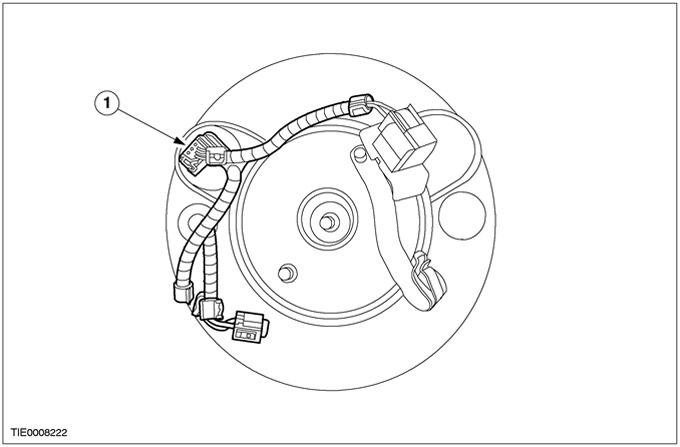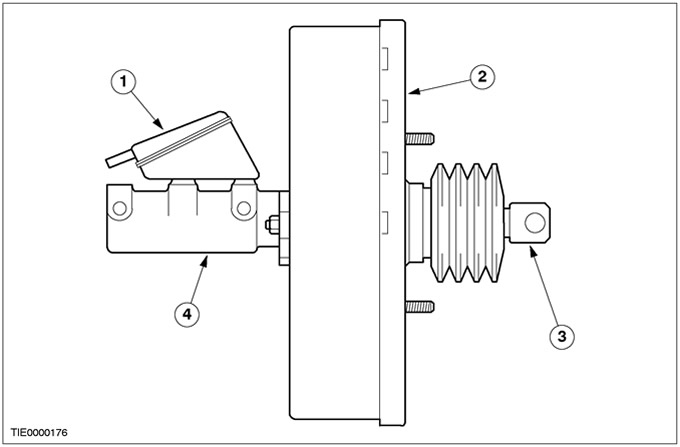WARNING: Brake fluid contains polyglycerol esters and polyglycerol. Avoid contact with eyes. Wash your hands thoroughly after handling brake fluid. If brake fluid gets into your eyes, rinse your eyes for 15 minutes with cold running water. If irritation persists, seek medical attention. If brake fluid is swallowed, drink water and induce vomiting. Seek immediate medical attention. Failure to follow these instructions may result in injury.
Vacuum brake booster membrane type is:
- independent node
- mounted on the bulkhead on the engine side
- using the vacuum in the engine intake manifold and atmospheric pressure as an energy source
- equipped with a non-return valve to temporarily maintain pressure in the event of a decrease in vacuum
Active brake booster
The active brake booster is installed on vehicles with a directional stability function. When the yaw control function is activated, the yaw control program electronic control unit actuates a solenoid valve located in the brake booster. As a result, atmospheric pressure acts on the reverse side of the diaphragm, and at the same time, a pressure build-up of approximately 10 bar occurs on the suction side of the pump without actuating the brake pedal.
Right hand drive vehicle shown (in left-hand drive vehicles - similarly)

| Pos. | Spare Part No | Name |
| 1 | Solenoid valve |

| Pos. | Spare Part No | Name |
| 1 | Hydraulic brake reservoir | |
| 2 | Vacuum brake booster | |
| 3 | Pusher | |
| 4 | Master brake cylinder |
Visitor comments